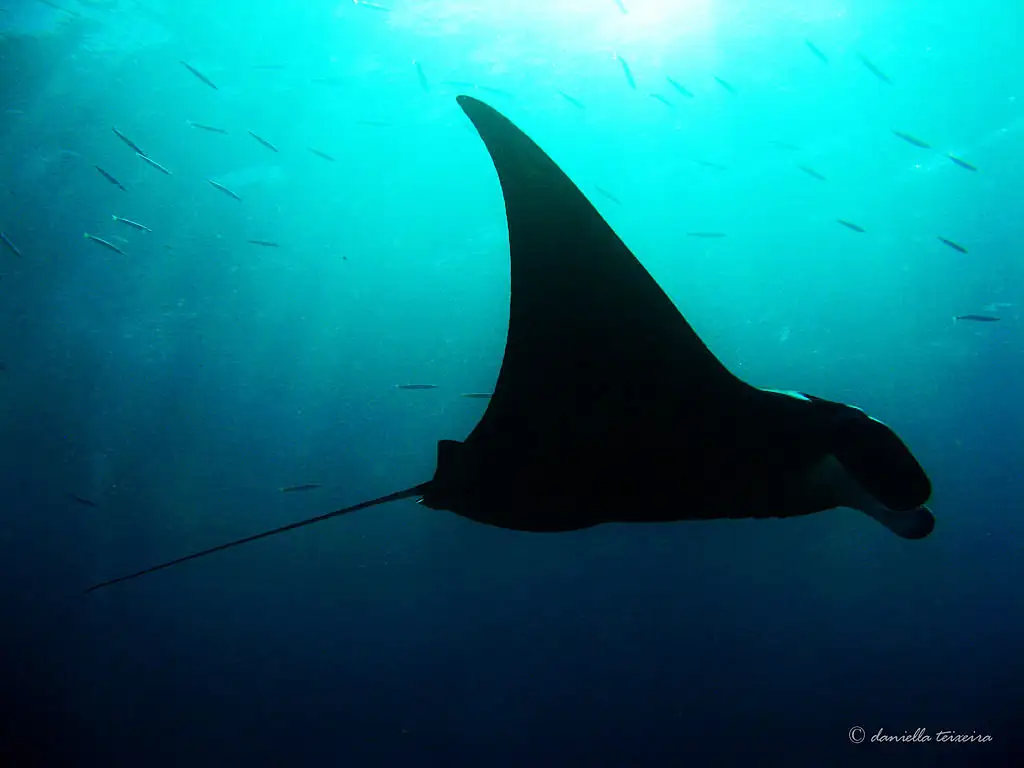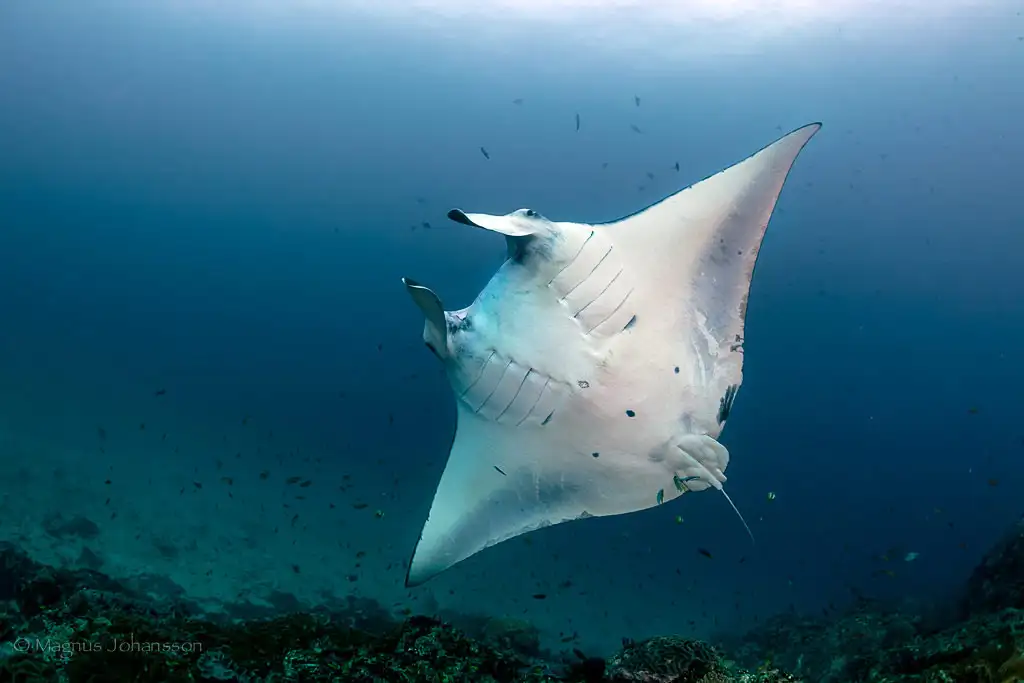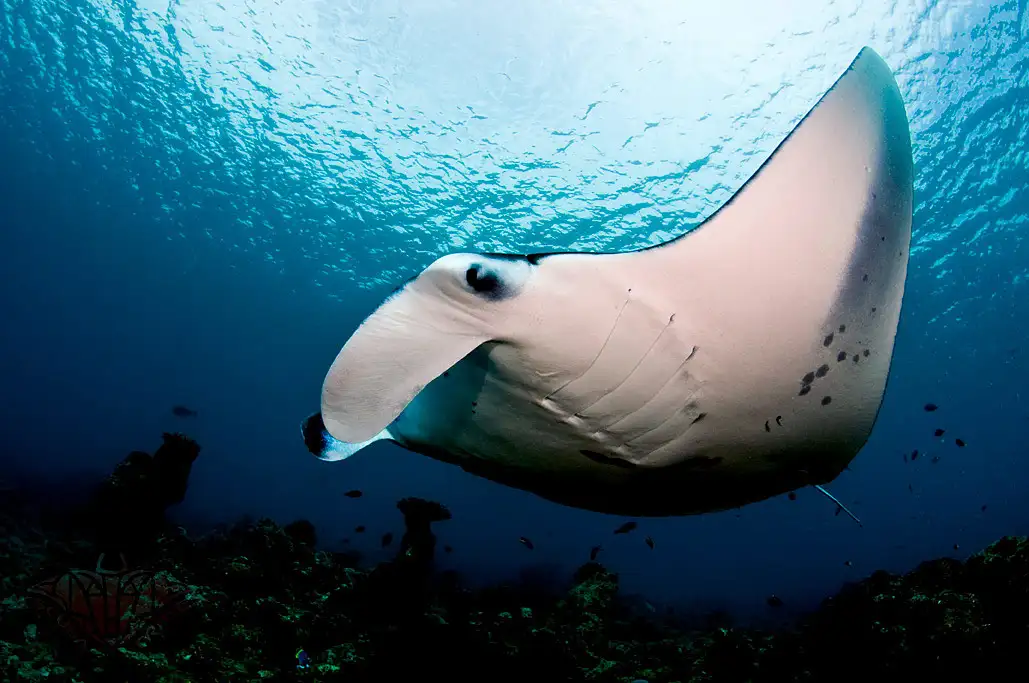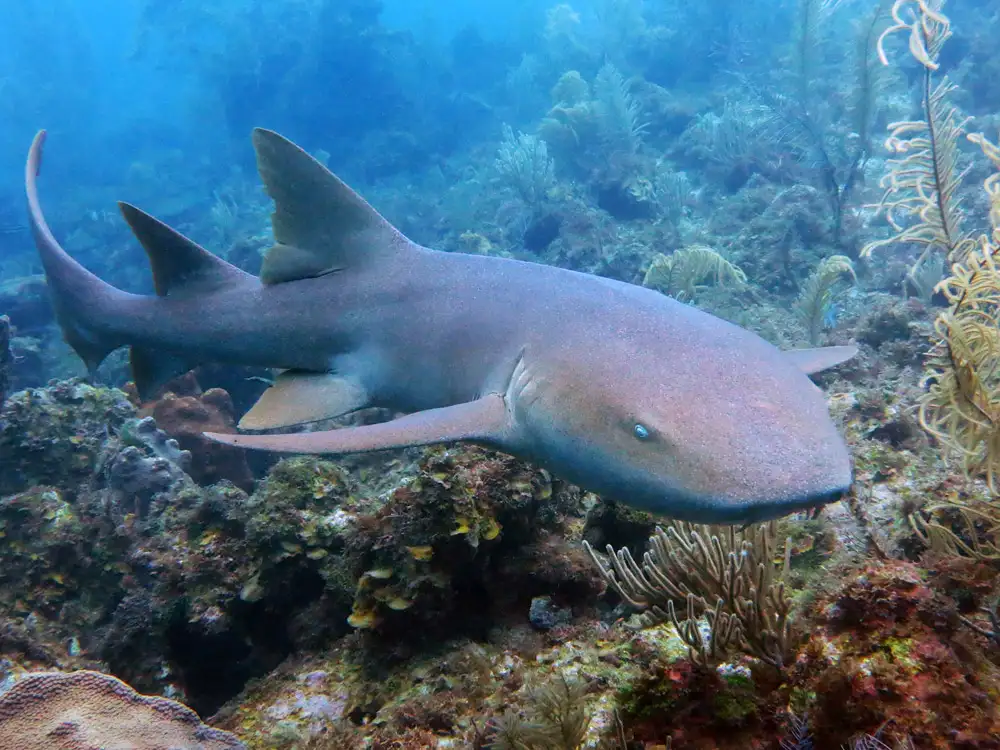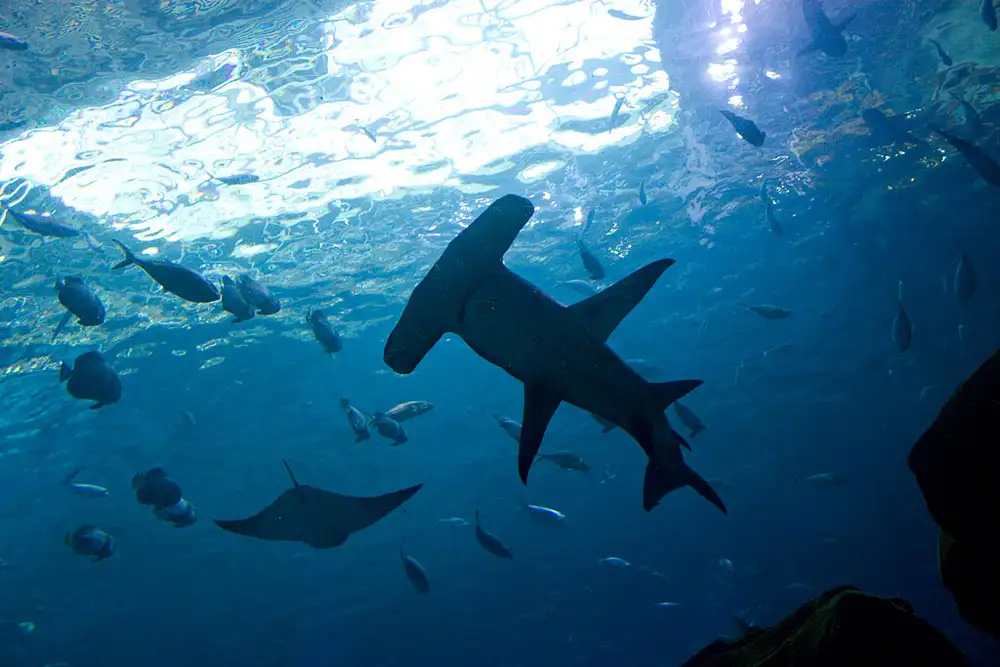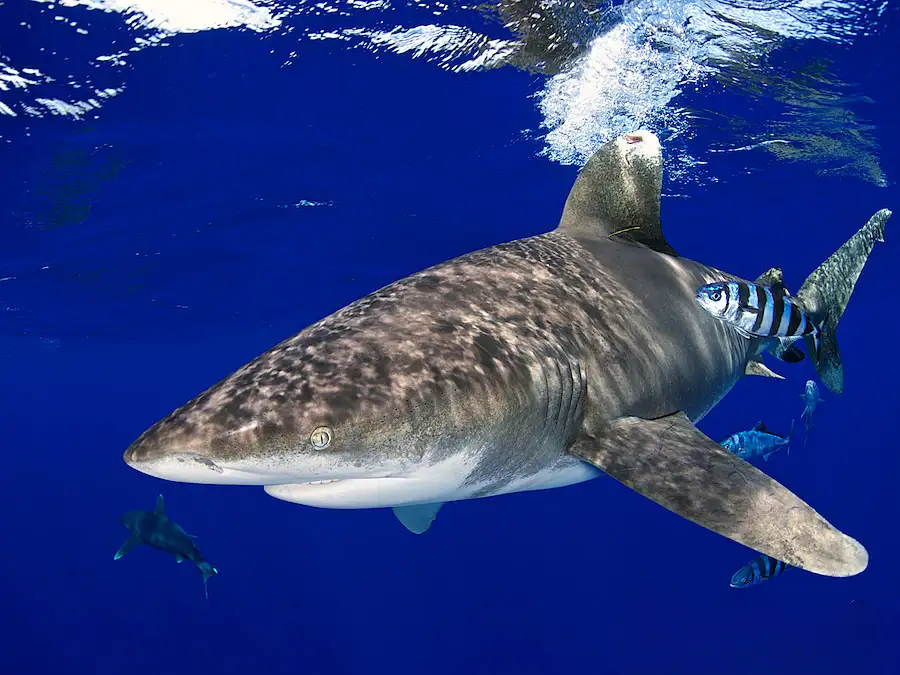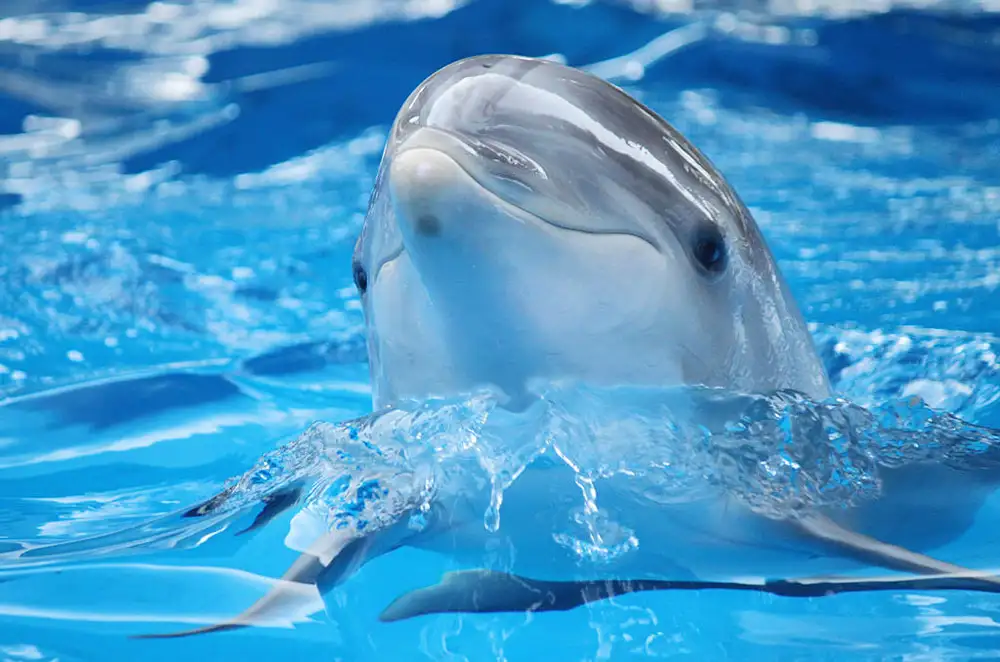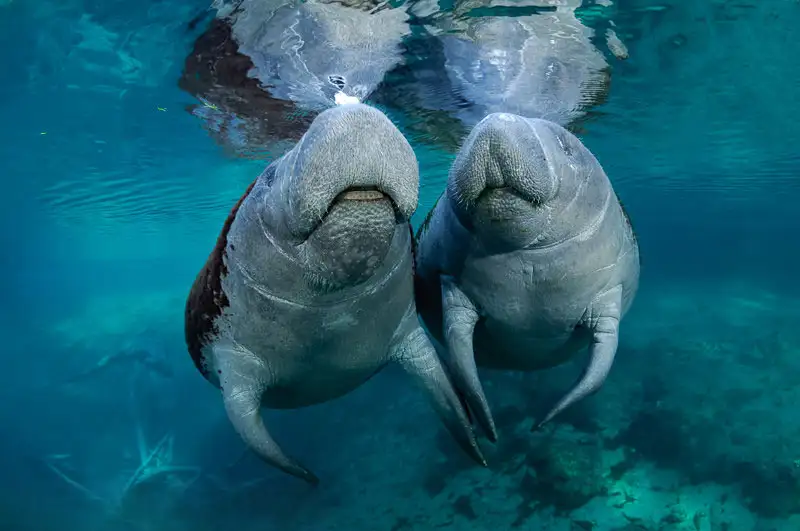Giant Oceanic Manta Ray
IUCN
ENBasic Information
Scientific classification
- name:Giant Oceanic Manta Ray
- Scientific Name:Mobula birostris (= Manta birostris)
- Outline:Large Fish
- Family:Mobulidae Mobula
Vital signs
- length:Disc width 4–6 m; up to ~7 m+
- Weight:Approx. 1,000–1,500 kg
- lifetime:~30–50+ years
Feature
Planktivorous filter‑feeder; oceanic migrations; cleaning‑station circling; low fecundity and late maturity.
Distribution and Habitat
Tropical–subtropical–warm‑temperate seas over outer shelves/slopes; fronts, upwellings and seamounts.
Appearance
Very broad rhombic disc; roll‑up cephalic lobes; terminal mouth; dark dorsum/white ventrum with black spots; shoulder patches.
Details
The giant oceanic manta ray (Manta birostris, widely treated as Mobula birostris) is afilter‑feeding mobulid that frequents upwelling fronts and outer‑reef cleaning stations and undertakes long‑range oceanic migrations.
Ecology & Life History
Feeding: zooplankton and small fishes via ram‑filtering with cephalic lobes channelling prey.
Reproduction: aplacental viviparous, typically a single pup; late maturity, very low fecundity (multi‑year intervals).
Behaviour: surface breaches; slow circling at cleaning stations for parasite removal.
Identification
Very broad rhombic disc; roll‑up cephalic lobes; terminal mouth; dark dorsum and white ventrum with asymmetric black spots (photo‑ID); often with shoulder patches. Larger and more oceanic than the reef manta Mobula alfredi.
Size & Longevity
Disc width: 4–6 m commonly; exceptional to ~7 m+.
Weight: ~1,000–1,500 kg.
Life: ~30–50+ years.
Range & Habitat
Global in tropical–subtropical–warm‑temperate seas over outer shelves/slopes; associated with fronts, upwellings, seamounts and reef cleaning stations.
Threats & Conservation
Fisheries: bycatch/targeted catch; historical gill‑plate trade.
Vessel strikes & entanglement due to near‑surface behaviour and ghost gear.
Tourism disturbance: crowding/touching/feeding.
IUCN: Endangered (EN); CITES Appendix II. Priorities: speed limits/buffers at hotspots, bycatch mitigation & rapid live‑release, and protection of cleaning stations with responsible codes of conduct.
FAQ
Q1. Manta vs. Mobula? Current taxonomy nests mantas within Mobula; the accepted name is Mobula birostris.
Q2. Dangerous? No stinger and docile; boating collisions are the main risk.
Q3. Distinguish from reef manta? M. birostris is larger/more oceanic with different shoulder/ventral patterns.
Q4. Conservation? IUCN EN; reduce bycatch and protect cleaning stations; regulate tourism and gill‑plate trade.

